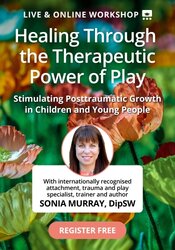Enrol in an online course today for flexible, self-paced learning—no fixed schedule required. Plus, enjoy lifetime access to course materials for convenient revisiting.
Stress and the Neurology of Noticing
30 January, 2019
Experiencing stress and being under pressure have become part of living and keeping up with the pace of modern life. Whether you are rushing to get the kids to school on time, are up against it at work, or are stuck in traffic and late for the dentist – you know what’s it’s like to feel stressed. But do you know what happens neurologically when you or your clients feel stressed, and what you can do about it?
In this blog, I’ll briefly explain the function of a part of the brain called the prefrontal cortex, and how it can help regulate and calm you and your client’s nervous systems via the process of awareness and noticing.
The prefrontal cortex is part of the cerebral cortex, and covers the front part of the frontal lobe of your brain – think forehead and you’re pretty much on it. This part of the brain is needed for executive function. Executive function means that you can control cognitive processes like planning, expressing your emotions, talking, moderating your behaviour and making decisions.
When your prefrontal cortex is neurologically firing appropriately and ‘online’, you are able to perform all these cognitive functions well. When you are stressed or triggered, some of these functions can be a little harder. In totally triggered states, such as a trauma state, they may be completely impaired.
According to the latest research, when your prefrontal cortex is firing well it has a calming effect on the mammalian and reptilian brain, and hence calms your nervous system, reducing stress.
One simple way to reduce stress and help regulate your system is through the art of noticing and paying attention. This is because these things engage your prefrontal cortex, which in turn calms parts of the mammalian and reptilian brain.
I therefore invite you to take a minute, stop what you doing right now, and notice what is happening inside your body:
- First, take three long breathes in and out, and then turn your attention internally
- Notice if you feel calm and relaxed
- Notice if perhaps you feel stressed or under pressure
- Notice what is going on in your body – the sensations and any tension
- Notice if there are thoughts, or perhaps no thoughts
This simple exercise above engages the frontal cortex, creates dual awareness through the practice of attention and quietens circuits in the mammalian and reptilian brain.
Below are some simple strategies that you and your clients can practice to help alleviate stress and regulate neural activity.
5 key strategies for reducing stress and regulating the nervous system
-
Exercise According to the latest research, exercise has a significant impact on stress reduction through calming the amygdala (which plays a key role in emotion-processing) and increasing endorphins
-
Sleep Try to get adequate, uninterrupted sleep. That means switching off any digital devices at least an hour before bedtime
-
Learn to mediate or be mindful Research suggests that one of the best ways of increasing neural activity in the frontal cortex is to learn to pay attention, and to practice the art of noticing in a non-judgemental way
-
Social engagement Sharing with another can often have the impact of reducing stress. It’s important the person that you talk to is someone you trust, and who understands and can validate your experience
-
Take a break Try to take time out about 5 times per day. Take a moment to focus your attention internally and notice how you are doing. Is your breathing fast or slow? Body calm or tense? Posture upright or slouched? Just notice!



![Ceo63b3w0uabhly4ycu3w[1]](/media/wweaj4n3/ceo63b3w0uabhly4ycu3w-1.jpg?width=410&height=410&v=1da9ffc7ac3acb0&format=webp&quality=80)














